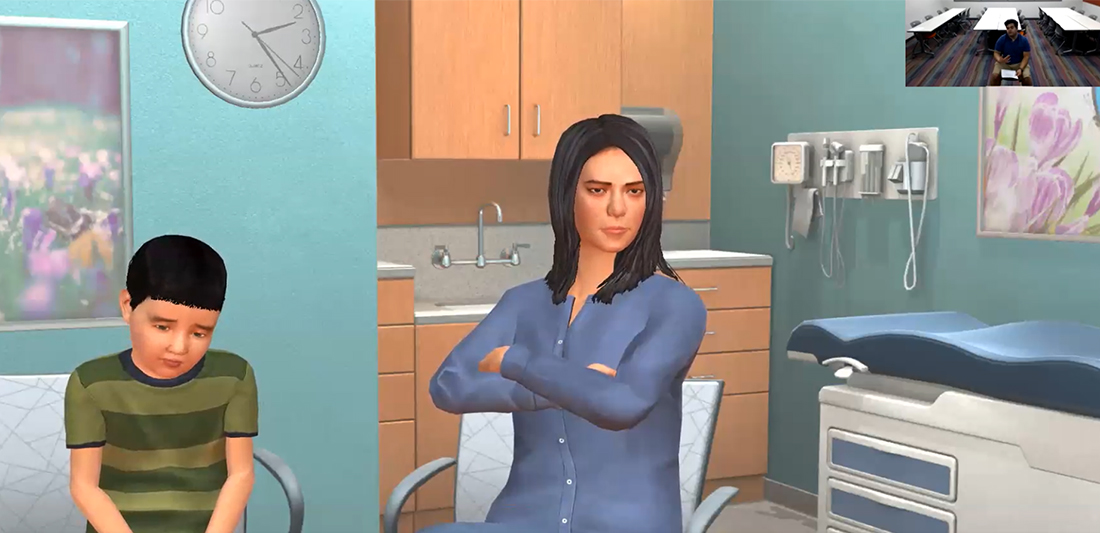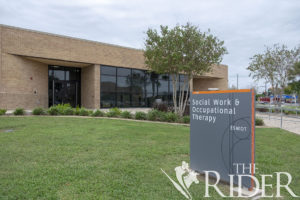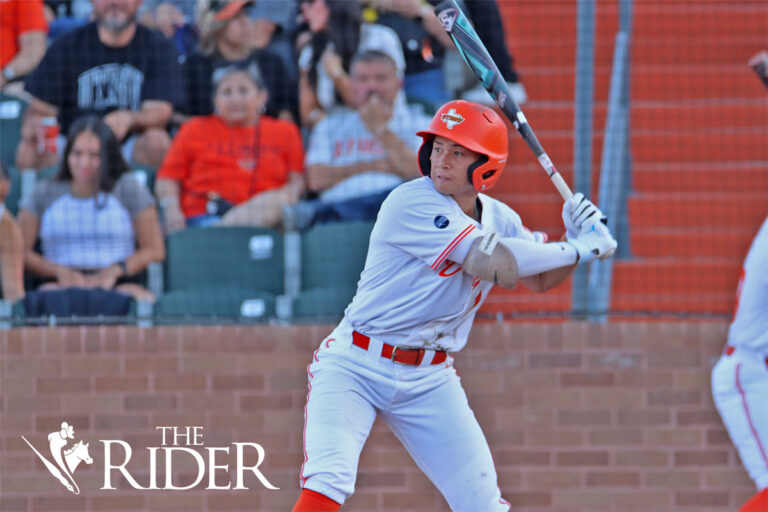
The UTRGV Department of Occupational Therapy has begun to utilize Mixed-Reality Simulation (MRS) software to innovatively prepare students and better their interpersonal skills via virtual scenarios.
Roel Garcia and John Luna, clinical assistant professors in the Department of Occupational Therapy, developed the idea to utilize MRS a year ago after hearing the College of Education and P-16 utilized the program.
“Some of our students were having a bit of difficulty with the interpersonal communications skills in terms of talking to clients, such as parents, patients and caregivers,” Garcia said. “So, [the MRS program] kind of popped up into my head.”
As of the interview, the occupational therapy students have experienced two simulation scenarios. The first of the scenarios involved a mother and her son, taking place Sept. 26 and 27 in the Education Complex on the Edinburg campus. The second scenario also involved a mother and her son, but added a “cultural component” by making them Spanish-speaking only. This session took place Oct. 23 and 24 in the Education Complex on the Edinburg campus.
Luna said the “magic” behind the Mixed-Reality Simulator is the human dynamic it provides, allowing each student to get a unique experience tailored to how they approach the case in that situation.
“We’ve actually done two cases already,” Garcia said. “They’ve both gone great in my opinion. We’re planning on doing, hopefully, two more before the end of the semester. So, it’s something that we plan to continue using and, hopefully, expand on if possible.”
Luna said the next simulation will focus on intraprofessional communication.

“How successful you as a team are, many times can be based on the successful communication and interaction you have with members of your team,” he said. “And so … we’re really going to be focusing on communication between the occupational therapist and the occupational therapy assistant … we’re really looking at [if they can] facilitate a successful interaction in order to promote the best quality of care for the clients that they’re treating.”
Luna said the cases for the simulations were made by Garcia and himself, drawing inspiration from their own experiences and challenges they’ve faced.
He said a lot of preparation is involved with making the simulations, meeting several times before letting students use it.
“The benefits that we’ve seen, I mean, in the short time that we’ve had [the simulations] for the students have been good,” Luna said. “And, we’re hoping to study this in the long term to see if we have some … quality improvements and feedback from the practitioners in the community. Hopefully, they’ll notice some improvements there.”
Last Friday, Garcia and Luna presented the Mixed-Reality Simulation at the Texas Occupational Therapy Association Annual Conference in Austin, where practitioners had the chance to try out a live demo.
“It’ll be interesting to see the way the practitioners could potentially integrate this into their programs,” Luna said.
He said they received positive feedback from practitioners who wanted to or were interested in how to utilize it, after presenting it Oct. 18 and 19 at the American Occupational Therapy Association Education Summit in Las Vegas.
Asked if this type of simulation was used before in their field, Luna replied, “Here on campus, yes. I’d say that we know of in the state of Texas, I’d say yes.”
Garcia said he was unsure how much UTRGV paid for the program, but it is available for all university employees to utilize at no cost, as far as the information he was given.
“I think it’s going to prepare [students] a little bit better, as opposed to going there without having practice,” he said. “This is a safe learning environment, so if they make mistakes, it’s OK. … This is where you learn.”
Garcia said he thought the program was going to be a great tool for students to use to prepare for practice and said the department will use it as long as the program is available.
“We had the opportunity to have two different sessions with the simulation,” said Ruth Sanchez, an occupational therapy graduate student. “And it’s really, really interesting. It allows us to start practicing our communication skills, how it’s going to be, or how it could be in the clinic so some good days, some bad days. So, it’s really exposing us to what to expect in the future.”
Karin Garza, an occupational therapy graduate student, said interacting with the simulation was fun but also felt real. She said it was a good learning experience and appreciated the opportunity to experience it.
Sanchez and Garza said they both felt they improved on their communication skills from the simulation sessions.
“I feel like they’re actually preparing us for our actual career. … We’re super grateful for what [our professors] are doing for us,” Sanchez said.





